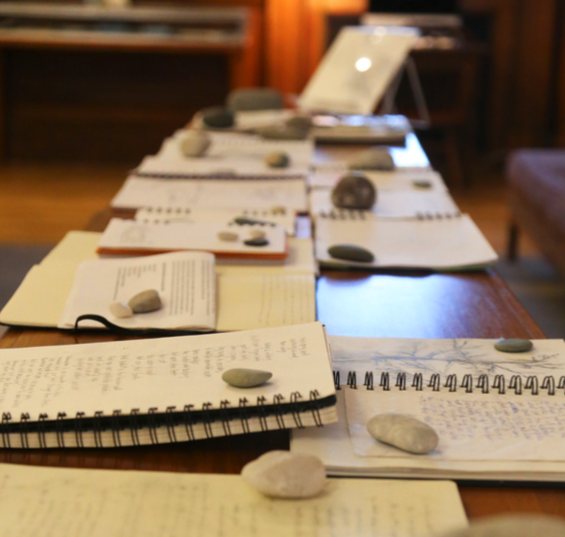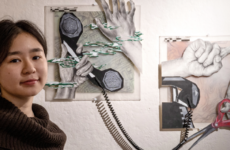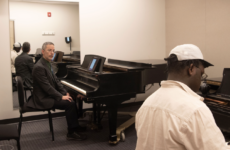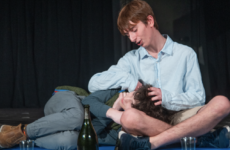Rough sketches in notebooks dashed with various strokes, poems scrawled hastily on scraps of paper, and rocks of various shapes and sizes s are not what one typically expects to see in an art exhibit. Art teacher Jessica Cuni’s newest piece, “Selective Truth: A Shifting Instillation” combines all three of those elements as the product of the last 20 years. The exhibit is refreshingly raw. It is comprised entirely of Ms. Cuni’s sketchbooks from the past two decades—what she calls “the drawings of her life.” As Ms. Cuni told me, artists sketch and don’t ever expect anyone but themselves to see it because of art’s inherent privacy. Through her piece, Ms. Cuni wants people to see something, but not everything about her life.
Ms. Cuni gets to choose what parts of herself she displays., “You only have one page. You don’t see what the rest of the 200 pages are filled with, and you think you know what I’m about, but you don’t,” stated Ms. Cuni. Every week or so, she comes back to her exhibit to change the theme entirely by flipping through the pages of her notebooks and finding new subject matter. One day she displays herself as a mother, the next she could be a poet. This makes the art all the more intriguing, because one can come view it a good number of times without seeing the same pieces.
The visual arts teacher created her work alongside her students during their Advanced Life Drawing final. “They were to come up with artwork that expressed the boundaries of life drawing,” said Ms. Cuni. This exhibit is her personal response to the assignment. Like life, the exhibit is constantly flowing and changing its form.
Another unusual aspect of the exhibit is that it is being displayed in the library. When asked about her reasoning on choosing the library over the PMAC, Ms. Cuni said, “The PMAC is a little out of the way and it is only people who take art classes and are in Arts Con who travel there”. Ms. Cuni wants to share her work with a broader audience who otherwise may not have seen it. By showing her work in such a public area, Ms. Cuni creates connections with various individuals in the community. Her poems and sketches can be relatable and comforting in ways that are not always found in other places on campus.
In the middle of the interview, the librarian who was sitting behind us at her desk chimed in to say that she found one piece of the work very relatable and touching. Ms. Cuni smiled at this, and it was evident that she felt fulfillment in her work.





